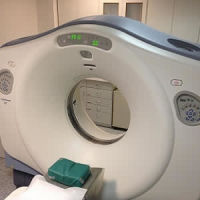The use of diagnostic imaging has increased significantly over the past decade, and expensive technologies such as CT and MRI have been extensively introduced into several diagnostic procedures. While the clinical information acquired from their use may be beneficial to patients, these diagnostic tests also lead to increased healthcare costs. New research findings from Italy, published in BMJ Open, highlight the need to reduce inappropriate use of CT and MRI. The study is the first to explore a large sample of imaging examinations requested during hospital stay.
"Inappropriateness of CT and MRI was associated with multiple factors that warrant careful attention. We found that inappropriate CT and MRI were less likely to confirm the diagnostic hypothesis," the authors wrote. "Our study showed that a relevant percentage of patients received multiple CT or MRI examinations, and repeated examinations were more likely to be inappropriate."
Appropriate use of MRI and CT is very important both medically and economically. There have been suggestions of various factors influencing overutilisation in many countries, including defensive medicine. Previous studies focused on outpatient requests referred to diagnostic imaging departments. The causes of inappropriate utilisation included medical liability fears, patients’ demands, regional differences in practice style and physician experience and training in the appropriate use of newer imaging modalities.
The American College of Radiology (ACR) developed an evidence-based set of appropriateness criteria (AC), which is intended to guide physicians to the appropriate use of diagnostic and interventional radiology for given clinical situations.
The aim of this study was to assess the frequency of appropriateness of inpatient CT and MRI scans performed in Southern Italy. The study was carried out by retrospectively reviewing medical records of adult patients admitted between 1 January and 31 December 2012 in two hospitals. The evaluation of appropriateness was performed according to ACR-AC, which assigns a score between 1 and 9.
During the study, 853 medical records were reviewed. Six hundred and thirty-nine patients received CT examinations and 256 received MRI examinations. Four hundred and ninety-six (77.6%) of the patient population had appropriate CT and 202 (78.9%) received appropriate MRI examinations. The appropriateness was associated with: a confirmation of the diagnostic hypothesis, only one examination performed during hospital stay, and the anatomical scan region, with musculoskeletal system being the least appropriate anatomical scan region. Moreover, for CT examinations, appropriateness was also associated with no use of contrast agent.
"This study showed an overall higher appropriateness than previous studies, and it is not completely surprising since in Italy the provision of inpatient care, free of charge for all, is properly addressed by a specialist who clinically evaluates the patient. Nonetheless, a lower appropriateness rate compared with other hospital settings, such as the emergency department, was shown," the authors explained.
In addition, the study showed that a relevant percentage of patients received multiple CT or MRI examinations, and repeated examinations were more likely to be inappropriate. As reported in previous studies, repeated imaging is common, and an uncertain proportion of them likely represents an inappropriate use and overuse.
"Further research is needed to expand appropriateness evaluation in this care setting [inpatient], to investigate more thoroughly internal and external causes of inappropriate use of imaging examinations and also to evaluate the effectiveness of some strategies such as the use of a computerised preauthorisation system in order to reduce inappropriateness," the authors concluded.
Generalisability of results to all Italian hospitals is somewhat limited, the authors noted, since the data were collected from two hospitals in Southern Italy.
Source: BMJ Open
Image Credit: Pixabay
References:
Bianco A, Zucco R, Lotito F, et al. (2018) To what extent do hospitalised patients receive appropriate CT and MRI scans? Results of a cross-sectional study in Southern Italy. BMJ Open 2018;8:e018125. doi: 10.1136/bmjopen-2017-018125
Latest Articles
CT, MRI, diagnostic imaging
The use of diagnostic imaging has increased significantly over the past decade, and expensive technologies such as CT and MRI have been extensively introduced into several diagnostic procedures. While the clinical information acquired from their use may b



























